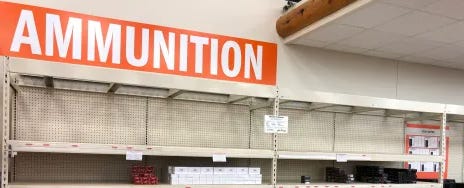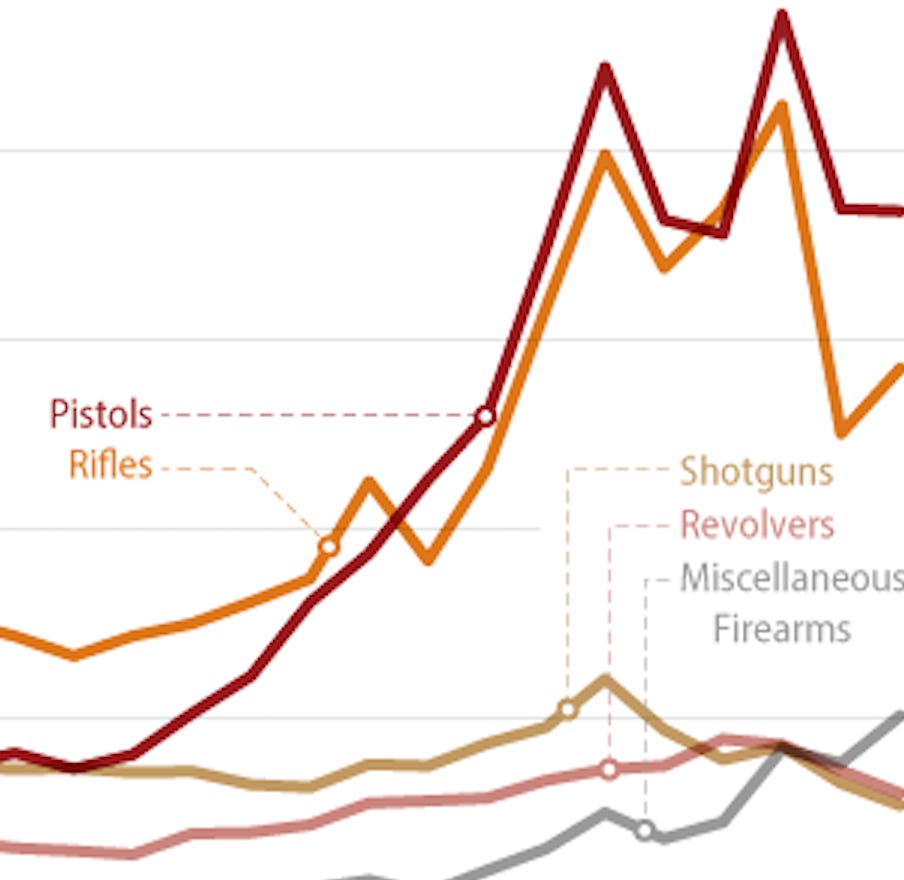
We might find it cathartic to curse politicians or fellow shooters who failed to warn us, but ultimately, we know it is our fault. We start to make promises: Next time, I’ll do better. Next time, I’ll be prepared.
When the facet of ammunition supply flows freely, we don’t imagine it will stop. We don’t remember how abruptly the shelves go bare. We might fool ourselves into thinking we will notice the shortage coming and stock up. The solution is simple: stock up and wait it out.

How much ammo should we store for emergencies? How much ammo should I have? We can answer these questions by making sure we understand what we are trying to accomplish. Don’t get caught without training ammo for an extended period of time. First, we calculate our average consumption, say 800 rounds/month. Now, we ask, how long do we want to prepare for? Most ammo crunches last about 18 months.
18 months x 800 rounds = 14,400 rounds of reserve ammo. Round that up to 15,000.
Then calculate the average cost now, say $14/box or $280/1000 rounds.
Will you spend $4,200 on ammunition you won’t shoot unless a shortage occurs? The trick is not shooting it—not dipping into it because we’re lazy or forgetful. If you are willing to spend that money and not shoot the ammo, then you’re good to go.
If you’re not willing to spend that, what can your plan be? The two variables are the length of preparedness and the amount of consumption. You can plan to reduce one or both.
Shoot Less Plan (Round-Up)
18 months x 400 rounds = 7,200 rounds. Round up to 8,000 rounds at $280/1000 =$2,240.
Shoot Less Plan (Round Down)
18 months x 400 rounds = 7,200 rounds. Round down to 7,000 rounds at $280/1000 =$1,960.
Shoot Less and Shorten Preparedness Plan (Round-Up)
12 months x 400 rounds = 4,800 rounds. Round up to 5,000 rounds at $280/1000 =$1,400.
Shoot Less and Shorten Preparedness Plan (Round Down)12 months x 400 rounds = 4,800 rounds. Round down to 4,000 rounds at $280/1000 =
$1,120.
Which plan is right for you depends on your desire to keep your skills and at what round count you need to keep that sharpness. Think of this like you would your emergency cash funds for personal finance.
Do you have three months of cash on hand? Is six months better? Is it feasible to have two years’ worth of cash on hand? The ammo stockpile is similar to your emergency funds. Everyone should have some savings and some amount of ammo stored, but what that amount is can only be determined by you. Use this exercise as a tool to find what works best for you.

